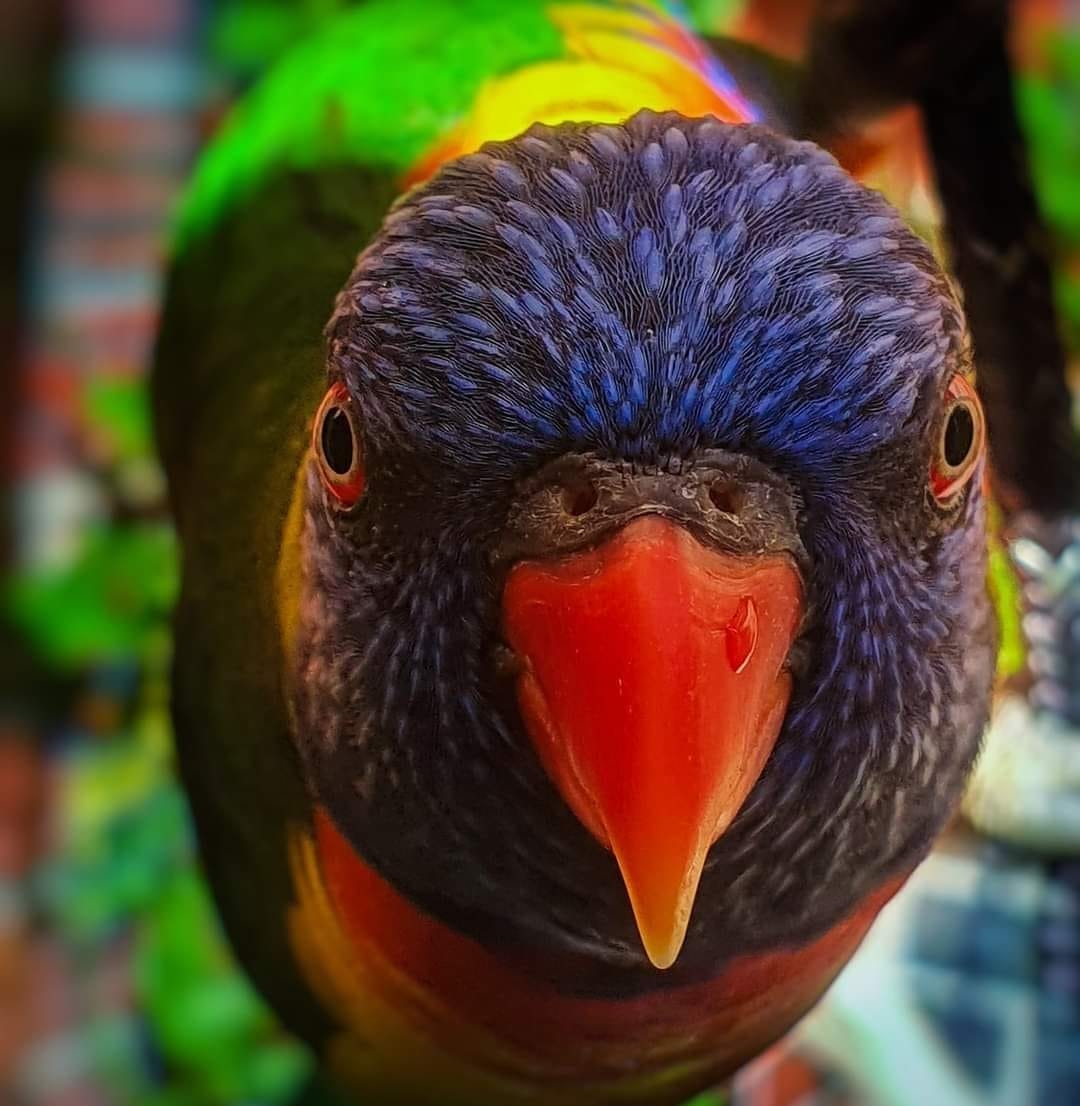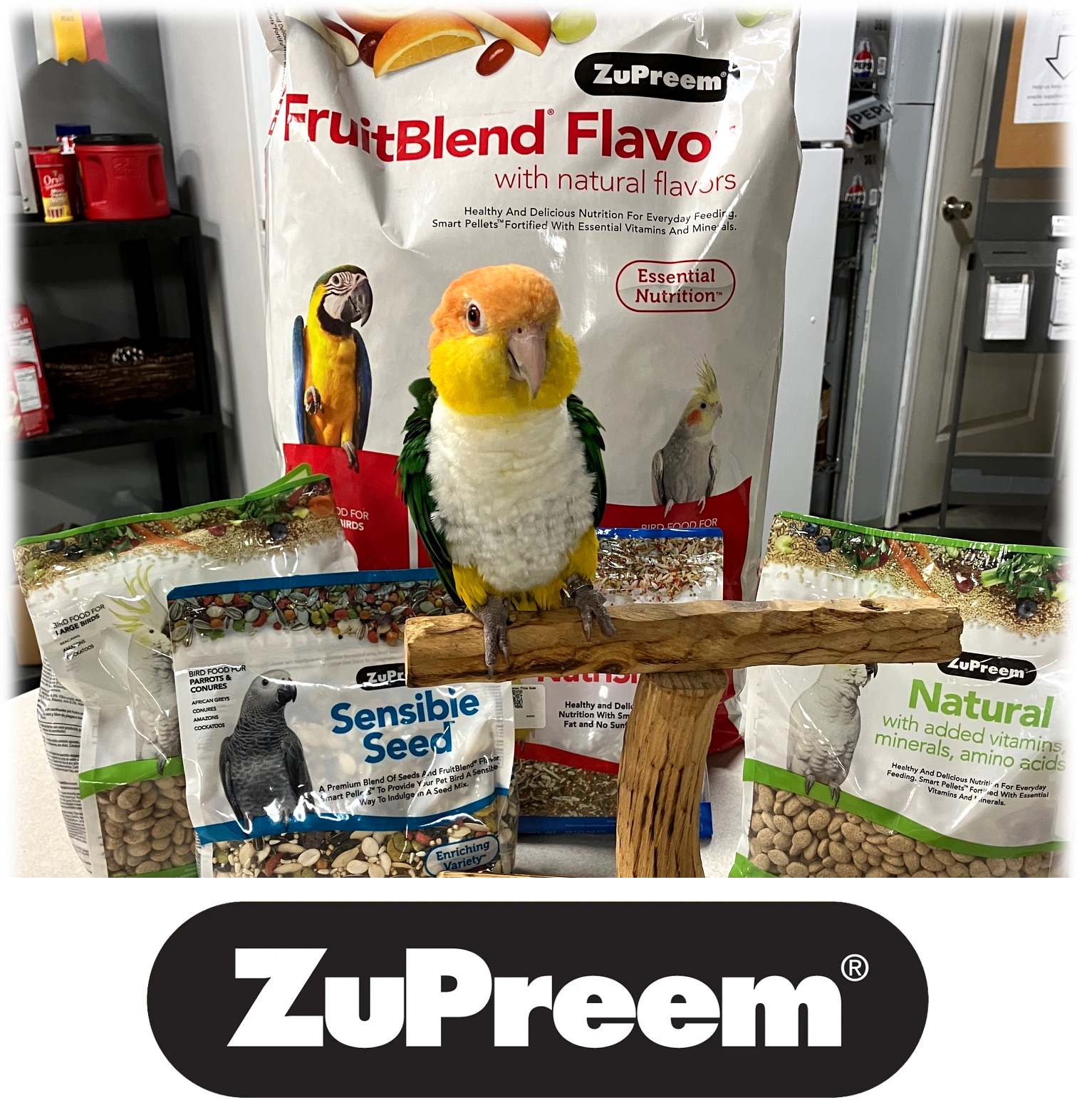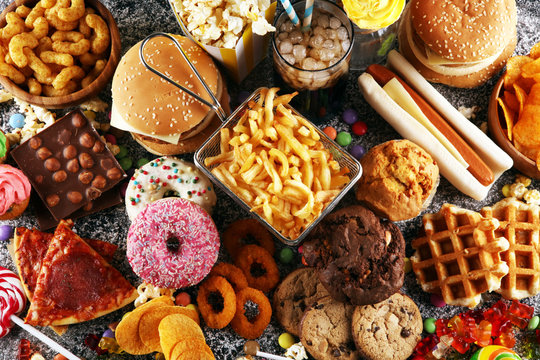Bird Nutrition: Feeding Pet Birds, Parrot Diets, and Nutrition Recommendations
Drs. Foster & Smith Educational StaffFeeding pet birds the right foods is important for their health. A balanced diet based on sound bird nutrition recommendations is the key. Balancing a parrot's diet from the beginning may prevent many health and behavior problems. But it's never too late to get your pet bird on a firm nutritional footing. It is something you will want to do since an unbalanced diet is a main cause of disease and early death in pet birds. Malnutrition is a human-made disease. Fortunately, it is also preventable.
Dietary differences among birds
When feeding pet birds, we must realize that the species of birds we have as companion pets do not all have the same dietary needs. Just as our North American wild birds such as chickadees, woodpeckers, and hummingbirds do not eat the same foods, neither do our companion birds. In general, parrots can be classified according to their normal diets. Most psittacines (members of the parrot family) are florivores, meaning the main portion of their diet is obtained from plants. Among florivores, there are granivores (birds that eat grain and/or seeds, including nuts), and frugivores (birds with diets based on fruits). Some pet birds are omnivores, whose diet can consist of both plant and animal components. There is a special class of florivores called nectarivores, who eat mostly nectar.
| Pet Bird Dietary Classification | Primary Diet | Examples |
|---|---|---|
| Florivore | Seeds, fruits, nuts, bark, roots, berries | Military macaw, Blue-and-Gold macaw, Red-faced parrot |
| Granivore | Grains, seeds | Budgerigar, cockatiel, Hyacinth macaw |
| Frugivore | Mostly fruit and flowers; some nuts and seeds | Blue-throated macaw, Green-winged maca |
| Omnivore | Seeds, fruits, insects, invertebrates | Sulphur-crested cockatoo, Red-tailed Amazon |
| Nectarivore | Nectar, pollen; some insects and seeds | Lorikeet, Lory |
Seed-eating birds
Even for seed-eating birds, seeds alone are not a proper diet. There are several reasons for this:- The seeds we offer our companion birds are not the same seeds they would find in their native habitats. We tend to offer seeds that are lower in protein and other nutrients, such as vitamins.
- The amount of energy used by wild birds in foraging for food is far greater than that used by our companion birds. Since our pet birds use less energy, they need to eat fewer calories or they will become overweight. Eating less, however, could result in vitamin, mineral, and other nutrient deficiencies.
- When offered seeds, our companion birds tend to pick out their favorites, and leave the rest. Limiting the diet to only several types of seeds can lead to certain nutrient deficiencies.

Even when multiple types of seed are offered, the seed-only diet will not supply the necessary array of vitamins and minerals that is needed for optimal health. Birds love seeds, like children (and adults) love candy. They will eat a favorite seed over what is healthy for them. The best diet for most seed-eating birds consists of formulated diets (such as pelleted foods), vegetables, small amounts of fruit, and an occasional treat.
Formulated diets: Formulated foods are readily available from many reputable manufacturers, pet stores, and veterinarians, and include Harrison's, ZuPreem, and Roudybush. The food is a blend of grains, seeds, vegetables, fruits, and various types of proteins, as well as additional vitamins and minerals. The ingredients are mixed and then baked. This formulated diet may be in the form of pellets, crumbles, or nuggets. Unlike a seed mixture, the bird cannot select particular components out of a formulated diet, so nutritional imbalances are much less likely to occur. There are commercial foods for different species, so be sure to select one appropriate for your bird. Some foods have higher fat levels for those birds with higher caloric needs such as macaws and Golden conures. Other foods are lower in fat and higher in protein to provide better nutrition for birds such as cockatoos and Amazons. Realize that some species, such as the Hyacinth Macaw, have very specific dietary needs and need special diets.
For most species, pelleted food should be 65-80% of the diet. Vegetables should make up 15-30%, and the remainder can be seeds and fruits.
Vegetables and fruits: Vegetables are a good source of vitamins, minerals, and carbohydrates, and should comprise 15-30% of the diet. Fruits, which are higher in sugar and moisture, should comprise about 5%. It is best to provide a variety of vegetables and fruit. The following table lists good choices of vegetables and fruits for psittacines.
| Nutritious Additions to a Psittacine Diet | |
|---|---|
| Vegetables | Fruits |
| Radishes | Apples |
| Turnips | Berries |
| Carrots (roots and tops) | Kiwi |
| Cooked sweet potatoes | Mango |
| Radicchio | Cantaloupe |
| Endive | Honeydew |
| Mustard and dandelion greens | Pineapple |
| Swiss Chard | Cherries |
| Kale | Cranberries |
| Parsley | Banana |
| Cooked red potatoes | Pears |
| Green beans | Peaches |
| Tomato | Oranges |
| Sweet red and green, and other types of peppers | Tangerines |
| Cauliflower | Star fruit |
| Broccoli (head and leaves) | Grapefruit |
| Beet and turnip greens | Papaya |
| Eggplant | Plums |
| Kohlrabi | Grapes |
| Sugar snap or snow peas | Apricots |
| Squash (peeled and steamed) | |
| Red beets (peeled) | |
| Romaine or green/red leaf lettuce | |
| Collard greens | |
| Corn | |
| Cucumber | |
Wash all vegetables and fruits thoroughly before feeding. Remove the pits and apple seeds from the fruit. Any vegetables and fruits left uneaten should be discarded daily so spoiling is not a problem. Because vegetables and fruits are high in water content, the urine portion of the droppings will increase.
Adding variety and appeal: Birds decide what to eat by sight, texture, and taste. Offer a wide variety of vegetables and fruit to provide a balanced diet. Keep them in as natural a state as possible and be creative when preparing meals. Hang food from the cage top or sides, weave food into the bars of the cage, or stuff food in the spaces of toys. As an example, for larger birds, feed corn on the cob rather than feeding kernels of corn in a dish. This will help entertain the bird as well as provide physical and mental stimulation.
Switching your bird from a seed-based diet: It is much easier to start a young bird on a varied diet of healthy foods than it is to convert an older bird to a new diet. A bird on an unhealthy diet may take more effort to be converted to a healthier diet. For more information, see our article: Switching from a Seed-based to a Pelleted Diet. When switching a pet bird's diet to one based on pelleted foods, you may notice a change in the bird's droppings, which will appear larger and lighter in color. If you see only scants amount of dark droppings, contact your veterinarian; it may mean your bird is not eating well and may need to be converted more slowly.
Non-seed eating birds
iets for non-seed eating psittacines such as Lories and Lorikeets consist pirmarily of a commercially prepared formula. Some of these may be fed dry or moistened; others need to be made into a solution and fed as a nectar. The nectar will need to be replaced several times daily; every 4 hours in hot weather.
The diet should also include some fruits such as: apples, pomegranates, papaya, grapes, cantaloupe, pineapple, figs, and kiwi. Pollen, corn-on-the-cob and some flowers such as pansies, nasturtiums, roses, hibiscus, marigolds, and dandelions may be offered, as well. Check with your avian veterinarian to determine the proper amounts.
Supplements
For most adult birds, supplements are not necessary, and should only be provided if recommended by your veterinarian. Commercial formulated diets contain the minerals and vitamins your bird needs. Using vitamin supplements could result in vitamin overdoses.
Foods to avoid
Some foods are on the do-not-feed list. These include:
- High-fat junk food (potato chips, doughnuts, etc.)
- Avocado (guacamole)
- Chocolate
- Alcohol or caffeine
- Fruit pits
- Persimmons
- Table salt
- Onions
- Apple seeds
- Mushrooms

Feeding methods
Birds in the wild spend at least 1/3 of their day foraging for food. Simply putting food in a dish deprives them of that physical and mental stimulation. Try using foraging toys and other methods to enliven your bird's eating times.
Feeding times
Formulated diet can be available at all times. Natural feeding times in wild birds are about a half hour after sunrise and again at 5-6 PM, so these would be good times to offer the fresh vegetables. Always remove any uneaten vegetables or fruit at the next feeding. Foraging toys can be left in the cage throughout the day for snacking and entertainment.
Monitoring intake
You should offer your bird only what he can eat in a day. This will make it easier to monitor his daily intake. Decreased food intake may be the first sign that a bird is ill.
Hygiene
Dishes should be washed daily in hot soapy water. No food should remain in the cage for longer than 24 hours, as the risk of fecal contamination or spoiling is high.
Water
Fresh, clean water should always be available. If a water bottle is used, the water should be changed daily and the tip should be checked daily to be sure it is working. Dehydration is a serious problem that can occur within a day or two if water is unavailable. If you are switching your bird from a water dish to a water bottle, make sure your bird knows how to use the bottle before removing the dish.
Grit
While not a food, grit is something people think all birds need. They do not. If it is overeaten, grit impaction can occur in the digestive system. Finches and canaries may benefit from a couple of grains of grit every couple of months, but budgies, cockatiels, and other parrots do not need it.
Conclusion
No matter which bird comes into your home, read and ask your veterinarian questions regarding your bird's specific nutritional needs. Feeding a balanced, varied diet will play a major role in helping your pet bird live a long and healthy life.